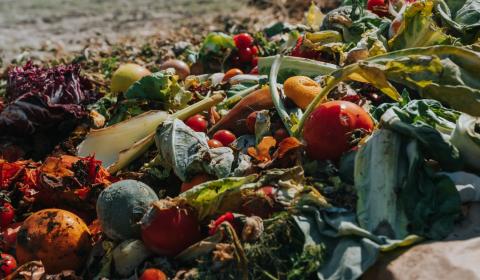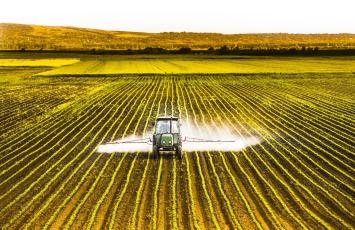
How to reduce food waste throughout the value chain
The statistics on global food wastage are enough to spoil even the heartiest of appetites. According to the United Nations (UN) Food and Agriculture Organization, one third[1] of the world’s food production is lost or wasted, while the European Union (EU) estimates that 20% of its food in the bloc is wasted[2].
This is particularly hard to stomach given that current estimates says nearly 8.9% of the world population lives in hunger.[3] Wastage also means that all the natural resources used to grow, process, package, transport and market that food are lost. Moreover, the food industry generates around 25% of the world's greenhouse gas emissions, emitting around 3.3 GT yearly which, were it a country, would make it the third largest emitting nation in the world.[4]
Cognizant of the need to act quickly, regulators are increasingly turning their attention to the problem. Wasting less food and supporting local farmers is the second of the UN’s 17 Sustainable Development Goals (SDGs), and reducing food waste is central to the EU's Farm to Fork strategy.
What exactly is food waste… and how does it occur?
The EU[5] defines food waste as food and inedible parts of food removed from the food supply chain that are to be disposed of or used for nutrient recovery or energy generation. The term does not include unavoidable losses from, for example, weather-damaged crops, nor does it include inedible elements such as bones or food packaging and wrapping.
Much food waste is avoidable. As the final link in the chain, consumers come in for much criticism of their contribution to food wastage - by letting expiration pass or serving over-large portions that are not eaten – but actually over half of all food waste occurs before it even reaches the consumer’s plate. During production, losses can be incurred due to damage through things like poor handling, use of machinery, and incorrect storage conditions. Food can also be lost at the processing stage through contamination, inefficiencies and inappropriate packaging. Problems during the distribution leg of the food journey can result from a lack of cooling or storage facilities and food going unsold or expiring before sale.
So, while we can all as individuals do our part to reduce food waste by buying only what we need and cooking in realistic quantities, the food industry has a critical role to play. Responsible operators are already looking at what they can do to address the issue head-on.
How can we reduce food waste?
Tackling food waste is key to achieving sustainability. SGD 12 for sustainable consumption and production patterns aims to halve per capita global food waste at retail and consumer levels and reduce food losses along production and supply chains by 2030.
In a UN ranking of waste reduction strategies, preventative actions come out on top. They are followed by reuse pathways of surplus food fit for human consumption, reuse of food as animal feedstuff, recycling of material into high added-value products recycling of nutrients and recovery of energy. It stands to reason that preventing waste upstream should result in a reduction of resources for strategies downstream. This will have an impact on their economic viability as it will reduce the need to invest in recycling and valorisation technologies. However, the adoption of a more circular economy business model, in which reuse, recycling and recovery are key tenets, is likely to play a huge part in achieving the UN’s goal.
Recycle and valorize
The processing stage of the food chain is a rich seam of possibilities as it offers both great homogeneity of waste streams and large and concentrated quantities of waste, which reduces logistics and capital costs. At this stage, recycling is a key option that can generate products like bioenergy carriers and compost as well as products with high economic added value.
Many of the valorization pathways that are being developed target waste from fruit processing, cereals and fish-based food. Fruit processing waste can be treated to obtain, for example, substances used for food additives, pharmaceutical products and cosmetics. Research is also underway to find ways to recuperate useful products from waste generated by meat and fish processing, and organic acids from the processing of cereals.
How Bureau Veritas can support the food industry
Measuring and monitoring are the watchwords for companies seeking to play their part in reducing global food waste. They must constantly evaluate and re-evaluate not only their contribution to the problem both also the performance of all actions implemented to make improvements. Key Performance Indicators are used to track the achievement of each action's goals and identify further opportunities for reducing waste. The objective must be one of continual improvement, and it is therefore critical that companies put in place systems that support and enable this approach.
Bureau Veritas’ Circular+ offer is designed to enable agrifood companies to move towards a circular economy model to reduce their environmental footprint throughout the value chain and implement more sustainable business practices. By renewing, reusing and recycling materials at every stage of the food supply chain, companies can preserve the critical resources that allow their businesses to flourish.
By doing so with the support of an internationally recognized team of experts within an independent certification body, they go one step further both to optimize their actions and demonstrate their commitment to all stakeholders.
REFERENCES:
[1] https://www.youtube.com/watch?v=IoCVrkcaH6Q
[2] https://ec.europa.eu/jrc/sites/jrcsh/files/kcb-food_waste_brief_print_hq.pdf
[3] https://www.un.org/sustainabledevelopment/hunger/
[4] https://www.youtube.com/watch?v=IoCVrkcaH6Q
[5] Food Use for Social Innovation by Optimising Waste Prevention Strategies (FUSIONS) project


